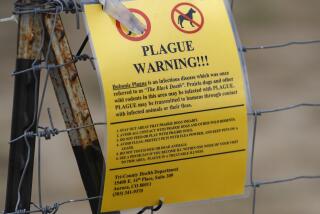Pneumonia: What does Clinton’s affliction say about her health?

On Sunday, Democratic presidential nominee Hillary Clinton’s bout with pneumonia put this common, and commonly dangerous, infectious disease in the spotlight. When we posed some questions about pneumonia to physicians who specialize in lung health, primary care and women’s health, some surprising facts came to light.
What’s pneumonia?
Pneumonia is an inflammation of the lungs, caused by one of many different kinds of pathogens — viruses, bacteria or fungi — that circulate widely and are readily passed from person to person. It causes the tiny air pockets of the lungs, called alveoli, to fill with fluid. When a physician listens to a patient’s breathing, she will typically hear “crackles” caused by the abnormal movement of air across the fluid-filled sacs. On an X-ray, which is sometimes but not always used in diagnosing pneumonia, the affected section of lung can show up as a dense white area. But for people with atypical pneumonia, a less virulent infection sometimes referred to as “walking pneumonia,” an X-ray image might show several hazy spots in many areas of the lung. The patient can have difficulty breathing, sometimes as a result of coughing, which is a reflexive effort to clear the lungs of fluid. Patients whose pneumonia is caused by bacteria tend to be sicker, and are likely to have fever as well.
How common is it?
Very common. A 1996 study estimated that about 4.8 million patients a year develop pneumonia in the United States — about one in 56 people each year.
“Pneumonia is something that generally happens to healthy people,” says Cleveland Clinic’s preventive medicine specialist Dr. Roxanne Sukol. “That’s not to say sick people aren’t at increased risk, but in general, pneumonia happens to healthy people.
“This is nothing, this is business as usual,” said Sukol, who specializes in women’s health at the clinic’s Executive Health pProgram. “We see this every day, but normally it’s not a public figure and no one notices. Patients take a few days off and keep going.”
Worldwide, pneumonia is a prolific killer of young children: In 2015, it killed 920,000 children, most of them under age 2. In the United States, its death toll is by far the highest among the very young and the very old (and 68, — Clinton’s age — is not considered very old in the U.S.). Rates of pneumonia may have declined somewhat with the introduction and growing use of two different vaccines, marketed commercially as Prevnar and Pneumovax, that protect against pneumonia caused by a wide range of streptococcus bacteriae. It’s not clear whether Clinton has received either vaccine. The Centers for Disease Control and Prevention recommend that all adults over 65 get one of them.
What’s the prognosis?
If a woman such as Clinton is generally in good overall health, she takes her antibiotic medications and follows her physician’s advice to get some rest, doctors say they would expect the infection in her lungs to clear in a few days. For people with underlying chronic diseases, or who are current or former smokers, recovering from pneumonia can be a longer process.
Among healthy patients who develop atypical pneumonia, the classic presentation of coughing, fever and shortness of breath do not send up red flags that an infection has taken hold. Dr. David Beuther, a pulmonologist at National Jewish Health in Denver, says that for these patients, dehydration — a natural response to almost any infection — is often the first sign of a problem. It’s not until they fall or faint as a result (Clinton is reported to have briefly staggered on Sunday) that pneumonia is suspected.
These patients often backslide briefly after they are rehydrated, Beuther said. As fluids pour in, they tend to accumulate in the lungs, because the antibiotics the patient has been prescribed have not yet fully cleared the infection. These patients are no longer dehydrated and lightheaded. But rehydrated, their lungs begin to produce sputum and they belatedly experience some of pneumonia’s more classic symptoms, such as coughing.
For such patients, Beuther said, the X-ray is the last thing to show improvement, sometimes taking months to return to normal. But the patient is perfectly well.
“Most people who get pneumonia do just fine,” said Dr. Pritish Tosh, an infectious disease physician and researcher at the Mayo Clinic in Rochester, Minn., who has not examined Clinton and declined to speak specifically about her health. “Usually within a few days, people will start to feel better without any long-term ill effects,” he added.
Who gets pneumonia?
Pneumonia can be caused by a virus, a bacterium or a fungus that has typically traveled through the air and been sucked into the lung, where it inflames tissue and causes an immune reaction.
Pneumonia is more common, and generally more serious, in people who have uncontrolled underlying conditions such as asthma or chronic obstructive pulmonary disorder (COPD, often called emphysema) and in people with compromised immune systems. People who develop pneumonia caused by a fungus tend to have had compromised immune systems in the first place, and they’re generally sicker than those with bacterial infections. But fungal pneumonia is rare; bacterial pneumonia is most common.
How do age, occupation and a patient’s health history factor in?
Cleveland Clinic pulmonologist Dr. Marie Budev said that a run-down immune system, a problem common to people with demanding or erratic schedules, can make a healthy person more vulnerable to developing pneumonia as a “secondary” bacterial infection after she’s had a common viral infection.
“The likelihood is that she got this through the means we all do,” Budev said of Clinton. “She’s exposed to thousands of people a day, shaking hands. And when you get a little more run down, you can get sick,” said Budev, who runs Cleveland Clinic’s lung transplant program. “That can happen to anybody,” she said.
Beuther of National Jewish Health said it’s a wonder that people who make their living traveling extensively, kissing babies and grasping the hands of people of all ages and backgrounds are not always sick.
“The fact it’s only happened once to one of these candidates is amazing,” Beuther said.
This is where Clinton’s age might actually be an advantage, he said.
See the most-read stories in Science this hour >>
As long as her immune system is fundamentally sound, he said, the fact that she’s been around the block — or the country — a few times means she’s likely been exposed to most disease-causing germs out there, and her immune defenses are better-prepared for the onslaught.
“The benefit of being older is a more experienced immune system,” he said.
After she saw Clinton looking so chipper only hours after having been rehydrated, Sukol said she was not alarmed when she heard that a diagnosis of pneumonia had been made. When people are battling chronic conditions and are stricken by pneumonia, a bolus of intravenous fluids is rarely enough to put them back on their feet, Sukol said.
“The fact she kept going like that: this is evidence of her health, not the contrary,” she said.
Do seasonal allergies lead to pneumonia?
People who suffer seasonal allergies are, even late in life, more likely to develop asthma. And people who have poorly controlled asthma are more likely to develop pneumonia, because they do a poorer job than healthier people of defending their airways against the entry and establishment of disease-causing germs. But there is no direct link between seasonal allergies and pneumonia.
Is a person with pneumonia contagious?
Generally speaking, physicians say that people with pneumonia are most contagious when they look and feel the sickest. People with walking pneumonia are not so floridly ill, and tend to be less contagious than those who are clearly sick. She would not be considered contagious shortly after she began taking a course of antibiotics, which reportedly began Friday.
Follow me on Twitter @LATMelissaHealy and “like” Los Angeles Times Science & Health on Facebook.
MORE IN SCIENCE
Smartphone app uses science to tell you whether your apple is ripe for eating
Move over DNA. Scientists can identify you based on the unique pattern of proteins in your hair
Parasitologist bestows squirmy honor on his distant cousin, President Obama







